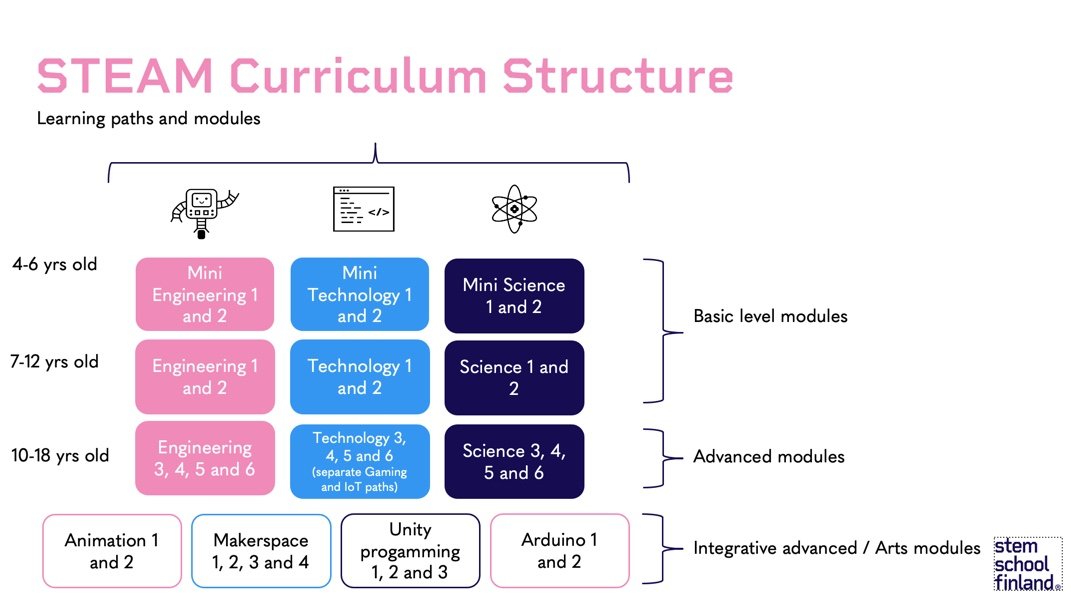STEAM Curriculum
-

Science
By definition, science refers to knowledge that is gained systematically through observation, study and experimentation. When applied to the natural world, it includes physics, chemistry and biology as well as their derivatives and branches such as astronomy, geology, oceanography, ecology, botany and zoology. Because the content of these sciences is physical, approachable and interwoven with young children’s lives, science is not only fascinating to them but an appropriate part of their curriculum.
STEM School Finland’s science curriculum and lesson plans have a strong learner-centered focus. Each theme and lesson includes concrete approachable topics which can be experimented in a regular classroom.
-

Technology
STEM School Finland’s technology curriculum empowers students to solve real-world problems with computer science. Younger children enjoy programming games, simple devices and make animations. From there they progress to build more complex program structures, websites, design their own games and build IoT systems.
In our curriculum students can choose after 3rd year that will they focus more on embedded systems or game programming and advance in those. This way students can move on to master the computer science areas they enjoy the most, reaching advanced topics as mastering Arduino, programming Unity or Python.
-

Engineering
Engineering is the use of math and science to solve real-world problems. It’s the combination of math and science with creative problem-solving that make up the essence of engineering. It includes building structures, designing products and systems, improving machinery and much more. Engineering has a place in nearly every scientific field as the practical application that stems from the information and laws that science and mathematics provide.
Our curriculum is based on the understanding of mechanics and learning how to apply those structures in real applications. When students learn the most fundamental structures, they are able to combine these into larger and more complex systems.
Examples of STEAM Curriculum
-

Science 1: Lessons 1 to 15
Surface tension
State and properties of matter
Substance density
Density of liquid
Gravity
Centre of gravity
Cardical directions
Air and air current
Colours of light
Light propagation
Light refraction and lenses
Mixtures and solutions
Separation of substances
Chemical reactions 1
Chemical reactions 2
-

Technology 2: Lessons 1-15
Introduction to Python programming
Loops
Rock-scissors-paper-game
Rock-scissors-paper-game
Quiz game
Guessing game
Functions
Arrow control
Arrow control
Functionw with parameters
Drawing game
Hanging-game
Space Invaders
Space Invaders
Space Invaders
-

Engineering 3: Lessons 15-30
Use of gear ratios
Complex gear systems
Bevel gear systems
Worm gear combinations
Pendulum applications
Launching applications
Complex cam structures
Ratational structures
Efficient trasfer of movement
Crawlers
Gear ratios and shifts
Combining several structures
Combining several structures
Programmable robotics
Our integrative Makerspace, Animation, Unity and Arduino modules can be joined after finishing one main learning path (Sciece, Engineering or Technology)
Each module includes 30pcs of 1 hour lessons. For example Mini Science 1 includes 30 lessons and Mini Science 2 30 lessons - all together there are 240 science lesson plans in our curriculum.

